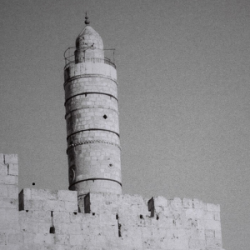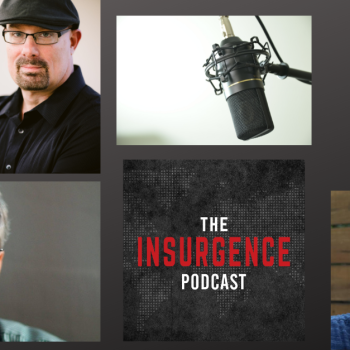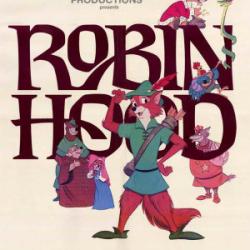The Qur'anis orders of magnitude more difficult than the U.S. Constitution, especially if one is not religious. Arabic and Chinese are not easy languages; nevertheless, U.S. foreign service officers are expected to learn them. Like reading the Bible, understanding the Qur'an requires finding learned, pious, and humble guides. Any text can be trashed or misunderstood with a hostile attitude. Knowing enough of the Qur'anto be able to follow it wisely will win respect from foe and friend alike. It was in recognition of this fact that Alexis de Tocqueville recommended that translations of the Qur'an be provided to French officials in his report to the French government on its 10-year-old misadventure in Algeria that began in 1830. [xvi]
Equally important is understanding what it means to live sincerely a life of submission to God's will, as the Lord's Prayer enjoins Christians to do. Americans who are estranged from religion could benefit by getting to know their own God-loving communities for whom tight adherence to scripture is their higher law: the Amish, Mennonites, Trappist monks, Mormons, Seventh Day Adventists and other Christian communities of faith that attempt to live by The Book. Such people can serve as bridges for the secular and nonreligious in understanding Muslims whose thinking about God is little different from that of committed Christians. For God-fearing believers, God, not nation-state, is the ultimate Commander-in-Chief. Spiritual engagement is precisely that-engaging not scornfully but empathetically with those whose "spirit" is different and playing to that spark of the Creator that resides in all His creatures, albeit some more visibly than others. A fundamental challenge inherent in this changed approach to decision making is the possible unwelcome effect of dividing the military soul. It is difficult to be empathetic and fight to kill, hence the tendency over history to dehumanize one's opponents both on and off the battlefield.
The insights that flow from such inquiries belong to the orientation phase, which Boyd considered to be the most important link in the chain. Of particular importance is the "implicit guidance and control" function of this phase that concurrently feeds back to the observation phase and ahead to the action phase, based on the observer's ongoing ability to synthesize a number of different variables such as cultural traditions, religious imperatives, genetic heritage, previous experience, and new information. It is this guidance and control function that enables the observer to adjust his or her responses to a constantly changing situation. Although the timelines for aerial combat and the conduct of international affairs are vastly different, the OODA principles remain valid for both. This new frame of reference should enable us (1) to acquire a more nuanced understanding of today's circumstances, (2) to reorient our thinking, and (3) to reshape our strategy accordingly.
Notes
[i] Douglas Johnston, "Why America Should 'Serve' as World Leader," Brown Journal of World Affairs 5, no. 2 (1998): 67-68.
[ii] For a detailed explanation of the rational actor model of decision making, see Graham Allison and Philip Zelikow, Essence of Decision: Explaining the Cuban Missile Crisis, 2nd ed. (New York: Addison-Wesley Educational Publishers, 1999), 23-33.
[iii] Maneuver warfare is as old as conflict itself and thus has many authors. Its greatest appeal is the fact that it offers the possibility of obtaining results disproportionately greater than the resources applied to the effort, thus providing a chance of victory for the materially weaker side. In its most recent manifestation, the U.S. Army played a leading role in its development under successive Chiefs of Staff Gen. Edward (Shy) Meyer and Gen. John Wickham based on the recommendations of a comprehensive study led by strategic analyst Edward Luttwak, who recommended a concerted emphasis on light infantry. In fact, an unstated purpose of the Army's advent to light infantry divisions was to "beat the Marines to the punch" in the rapid-deployment mission. Michael Mazarr, Light Forces and the Future of U.S. Military Strategy (Washington, DC: Brassy's, 1990), 31.
[iv] Upon first meeting Harry Hillaker, the designer of the F111, Boyd told him it was a "piece of s---." Unlike many pilots who don't like the way a plane handles, Boyd knew exactly where all the problems were, and so did the designer. They eventually became close collaborators.
[v] Robert Coram, Boyd: The Fighter Pilot Who Changed the Art of War (New York: Back Bay Books, 2002), 341.
[vi] Ibid., 424. Defense Secretary Cheney quietly applied some of Boyd's ideas in the run up to Desert Storm.
[vii] Col. Stanton Coerr, "Fifth Generation War: Warfare versus the Non-State," Marine Corps Gazette93:1 (January, 2009): 68. See also, John Boyd, "Patterns of Conflict," ed. Chet Richards and Chuck Spinney (Defense and the National Interest, 2007), 111, www.d-n-i.net.




